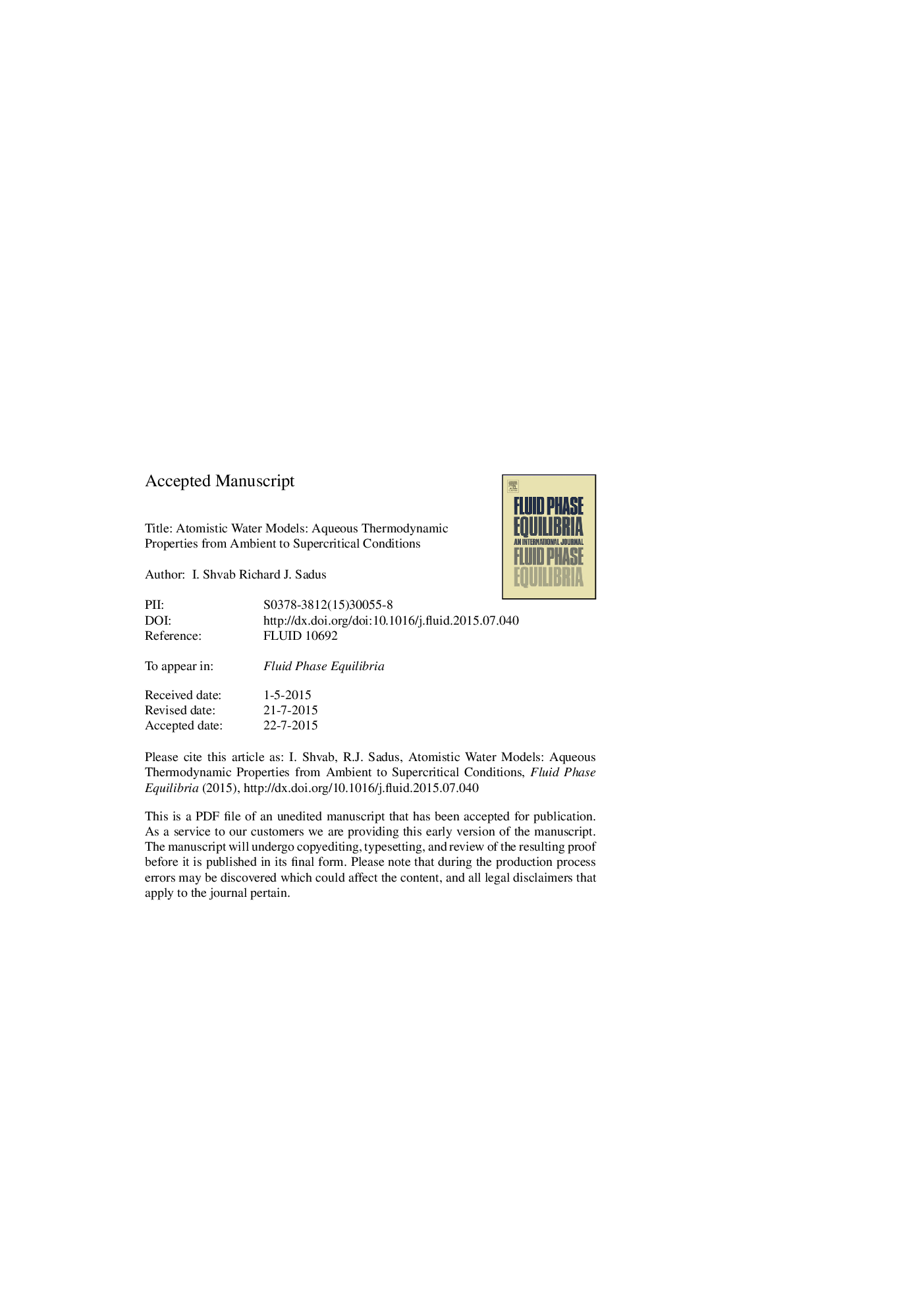| Article ID | Journal | Published Year | Pages | File Type |
|---|---|---|---|---|
| 6619561 | Fluid Phase Equilibria | 2016 | 76 Pages |
Abstract
Progress in obtaining an accurate atomistic model for water is reviewed and evaluated with particular attention to thermodynamic properties such as the thermal pressure coefficient, thermal expansion coefficient, isothermal and adiabatic compressibilities, isobaric and isochoric heat capacities, Joule-Thomson coefficient, speed of sound and vapor-liquid equlibria. The different multi-site models are categorised in terms of bond rigidity/flexibility and polarization. The models are assessed for their ability to reproduce experimental values at conditions ranging from ambient to supercritical conditions. In general, three or four sites are sufficient to obtain reasonable results with the addition of more sites not consistently yielding improvements. The addition of bond flexibility, while improving agreement with experiment for such properties as phase coexistence, dielectric constants, viscosity and diffusion, does not appear to significantly improve the prediction of thermodynamic properties in general. For the supercritical heat capacities and thermal expansion coefficient the flexible TIP4P/2005f model yields less accurate values than its rigid TIP4P/2005 counterpart. In contrast, accounting for polarizability consistently results in improved agreement with experiment. For properties such as the isochoric heat capacity and thermal expansion coefficient, the polarizable MCYna model yields values that are in very close agreement with experimental data in the temperature range of 300-600Â K. A quantitative ranking scheme is proposed and applied to ambient conditions. At or near ambient conditions, the overall ranking of models investigated is (iAMOEBA, MCYna)Â >Â (BKd3, TIP4P/FQ, GCPM, BK3)Â >Â (TIP4P/2005, SPC/Fw, SPC/E)Â >Â (SPC, TIP4P/2005f, NvdE, TIP5P)Â >Â (TIP4P, TIP3P)Â >Â (MCY, MCYL).
Related Topics
Physical Sciences and Engineering
Chemical Engineering
Chemical Engineering (General)
Authors
I. Shvab, Richard J. Sadus,
